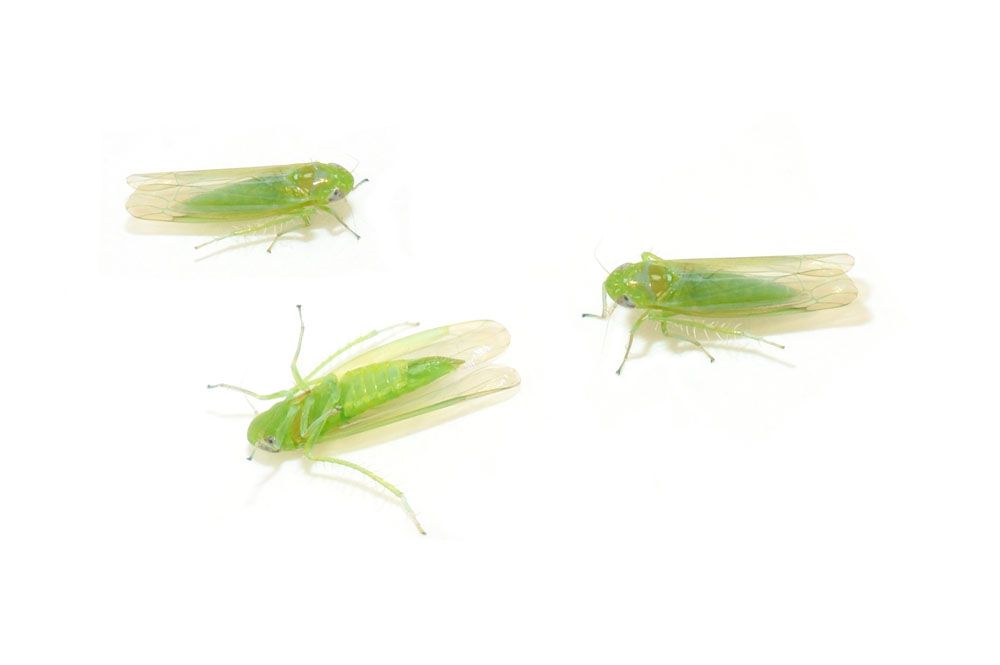
Potato Leafhopper – Empoasca fabae
Potato Leafhopper – Empoasca fabae
Common Name: Potato Leafhopper
Latin Name: Empoasca fabae
Appearance:
- Potato leafhoppers are wedge-shaped insects that are only 1/8 inch long. The insect’s body is thickest at its head, and thinnest at its wing ends.
- Potato leafhoppers have piercing and sucking mouthparts that give them nutrients from their hosts. This leafhopper is light green with six white dots behind the head. A hand lens may be necessary to see these little white specks. Potato leafhopper nymphs are smaller than adults and yellow to pale green.
- Adults have pale or transparent wings, while nymphs and immatures lack wings. Adult leafhoppers quickly jump or fly away when startled.
- Potato leafhoppers have lengthy hind legs, which explain their remarkable leaping ability. Although leafhopper nymphs cannot fly, they are extremely fast and travel sideways over the leaves when disturbed.
- Potato leafhopper eggs are white, thin, and tiny, measuring about 1/24 inch long.
Host plant:
Potato leafhoppers consume around 200 different plants, both cultivated and wild. Vegetables such as beans, potatoes, eggplant, and rhubarb, as fruit trees and fodder crops, are susceptible to infection.
Damages caused by Potato Leafhopper:
Adults and nymphs have piercing-sucking mouthparts and feed on plant phloem sap. This species, unlike other leafhoppers, repeatedly explores host plants and lacerated cells. Potato leafhoppers inject watery saliva containing an enzyme that slows plant photosynthate migration while eating. Yield loss comes from losses in intermodal length and stems height and declines in crude protein content.
Life history and habits:
This bug spends the winter in the Gulf Coast states before migrating to Oklahoma in the spring or early summer. Many flying adults frequently arrive unexpectedly in fields shortly after the plants emerge. Females utilize their sharp ovipositors to implant eggs into the major veins or petioles of leaves 3 to 10 days after mating. Each female lives for at least a month and lays 2 or 3 eggs daily. The eggs hatch in around ten days, and the nymphs develop in approximately two weeks. Nymphs often develop on the leaves from whence they hatched. Mating occurs around 48 hours after maturation, and the life cycle is repeated. There are three or four generations per year.
